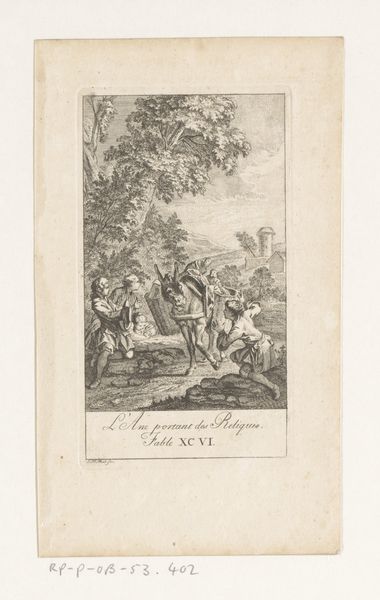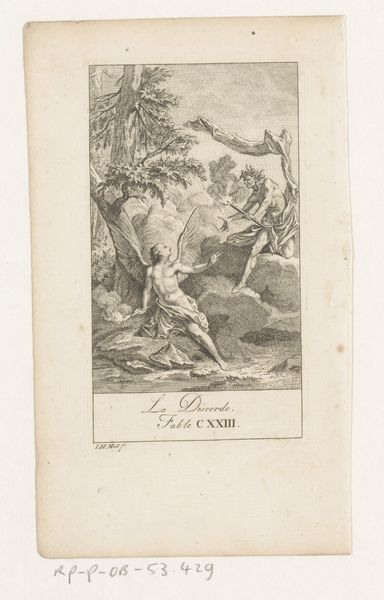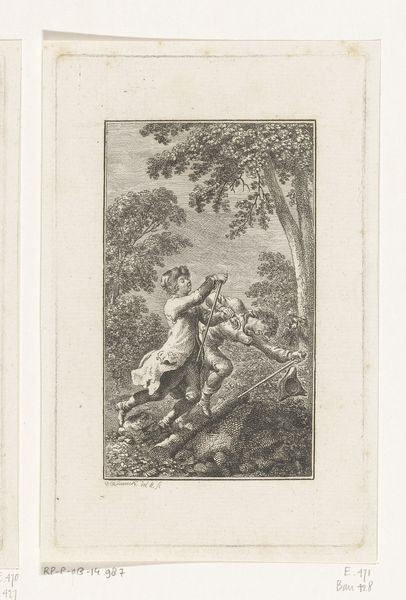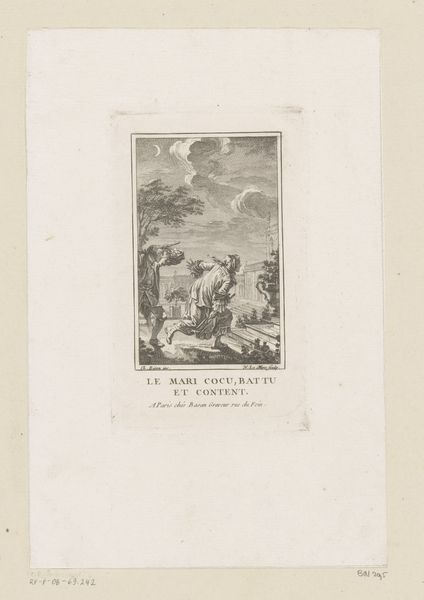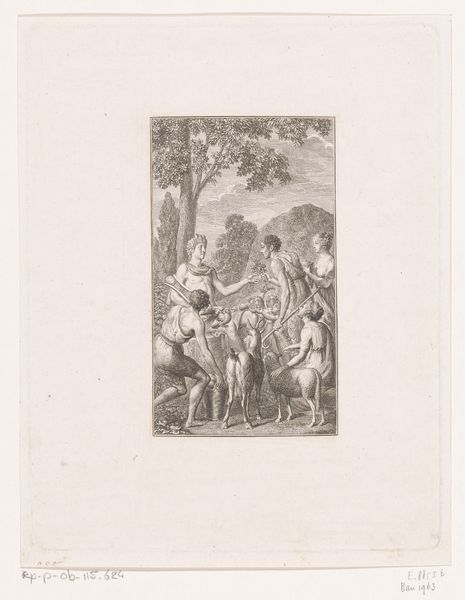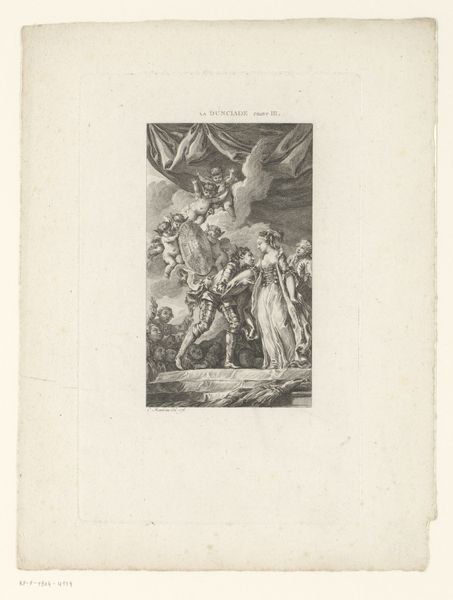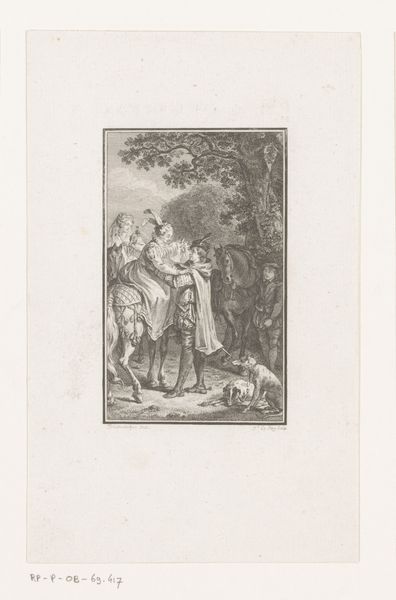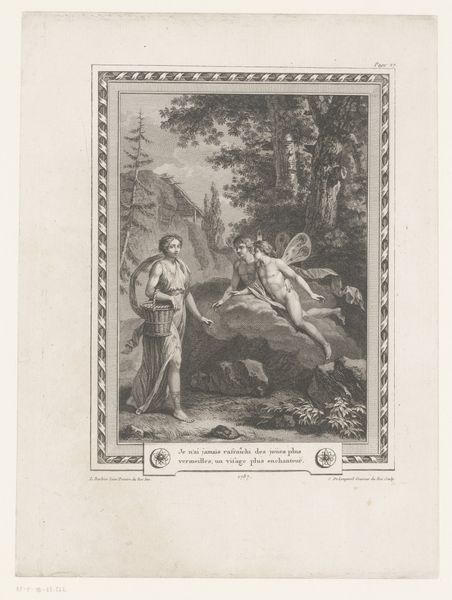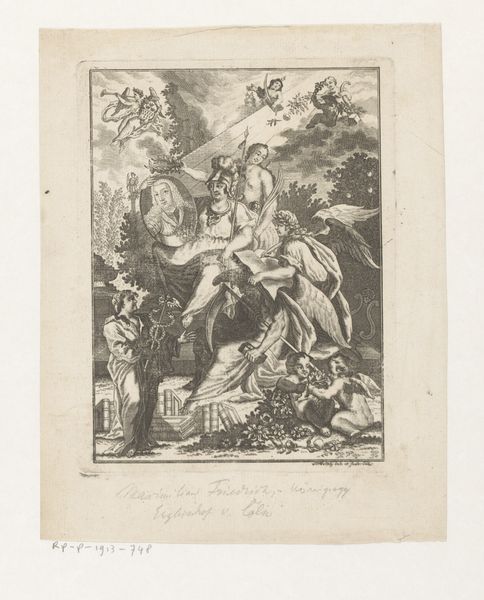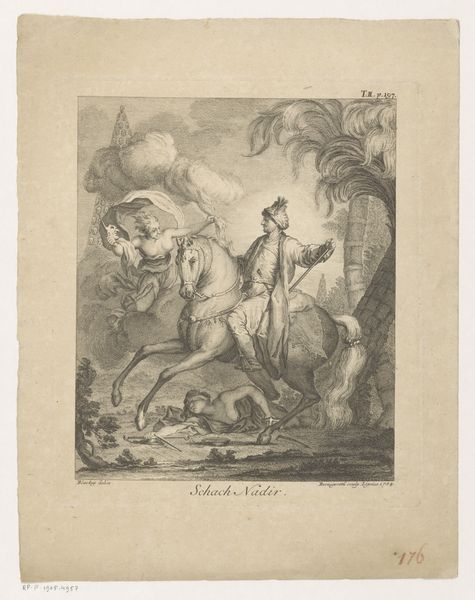
print, paper, engraving
# print
#
landscape
#
paper
#
genre-painting
#
engraving
Dimensions: height 142 mm, width 81 mm
Copyright: Rijks Museum: Open Domain
Editor: Here we have Johann Heinrich Meil's 1758 engraving, "Fable of the Lion and the Hunter," rendered on paper. It has such a whimsical quality to it, despite depicting what I imagine would be quite a serious encounter! What strikes you when you look at this piece? Curator: Well, immediately my eye is drawn to the labor embedded within this relatively small object. The engraving process itself - the physical act of carving into a metal plate, inverting the image, the specific tools used and how accessible these tools would have been, really speaks to a particular moment in production and class structures of 18th century artistry. This isn't some grand oil painting destined for a palace, is it? What does the relative affordability of paper prints say about Meil's intended audience and purpose, compared to other forms of art making at the time? Editor: That's a good point; prints definitely democratized art. How would that have affected his subject matter and style choices? Curator: Potentially hugely! We see elements of landscape painting— itself a developing genre — mixed with genre painting focused on fable-telling, potentially geared towards education and entertainment. I would be interested to understand where the paper for this engraving came from, how it was produced. Its texture and composition hold as much significance as the lines incised into the metal to create the image. What was the artist consuming to get that piece of paper, and what happens to the print when it’s old and falls apart? It raises fascinating questions around materiality, craft, consumption, and lifespan, wouldn’t you say? Editor: I hadn't thought about the physical object of the paper itself being a key to understanding the work and how it’s circulated! Thinking about this print as a manufactured object offers such a unique lens for examining its meaning. Curator: Absolutely. It’s about the whole social life of things, from the artist's hand to its final destination, and eventually returning to the earth as something else.
Comments
No comments
Be the first to comment and join the conversation on the ultimate creative platform.

